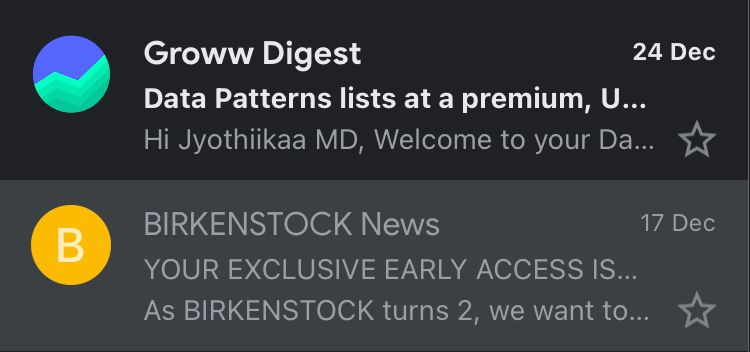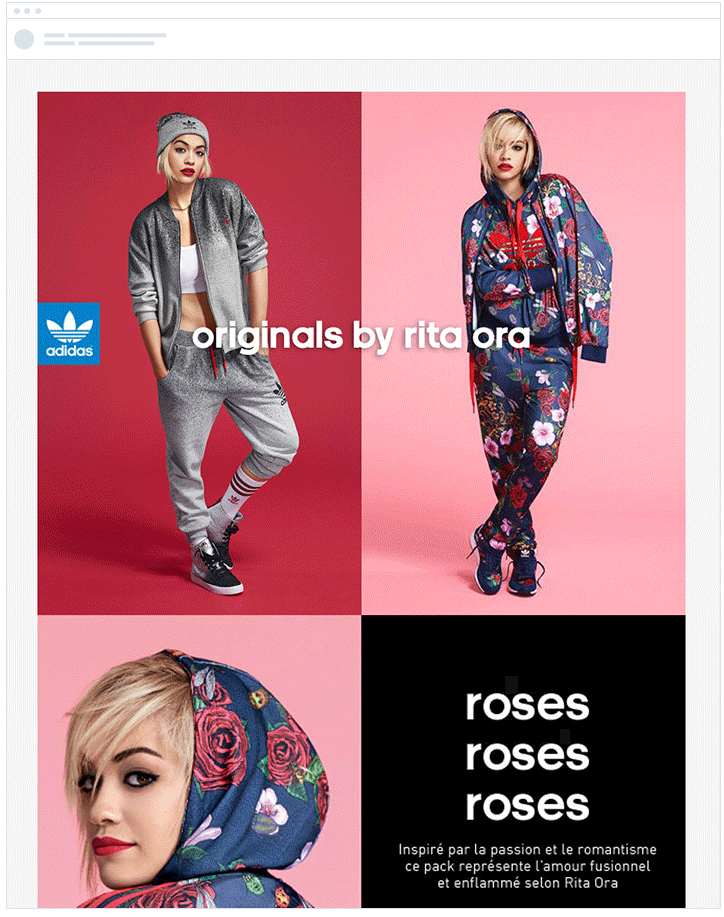Email marketers usually create different variations of a single campaign to send out to different audience segments.
For example, an eCommerce retailer would send different versions of their Black Friday sale campaign to male and female audiences.
Creating such versions manually and sending them to your respective audiences can be extremely time-consuming and tedious.
That's where dynamic email content comes in. Using dynamic content, you send customized campaigns to different people in your audience based on their interests, site activity, etc.
In this guide, we give you all the information you need to know about dynamic content, how to implement it with some examples, and so on.
Table of contents
- What is dynamic email content?
- What are the benefits of dynamic email content?
- What are the different types of dynamic email content?
- How to use dynamic content in email marketing?
- How to add dynamic content features to your campaign?
- Example of dynamic email content
- Wrap up
What is dynamic email content?
Dynamic email content in email marketing is any content in an email that differs based on the subscribers’ behavior, data, and preferences. And it is used to personalize certain aspects of an email like visuals, text, or calls to action to target specific subscribers.
You can consider the following variables when you want to create dynamic content:

For example, you have launched a few different online courses that can be relevant for different types of working professionals like business owners, full-time employees, CEOs, self-employed people, and freelancers. In this situation, you need to personalize the email with the courses that'll be most suitable for the individual and send it to them.
And manually figuring it out, and personalizing such emails can be time-consuming, which is where dynamic content will help you. It'll help you modify your basic email with some unique aspects personalized based on information from subscribers.
What are the benefits of dynamic email content?
Here are some of the benefits of using dynamic email content in your email campaign:
✅It improves customer experience
Dynamic email content helps businesses cater to each subscriber by personalizing the email content to provide valuable, and relevant information to them that they need. Personalized emails make subscribers feel special and valued. They also feel that you as a company put your customers first.
✅It helps save your time by avoiding personalizing it manually
Some companies manually segment, and personalize content to compose hyper-personalized emails for their customers, which takes a lot of time and effort. Dynamic email content helps save your time as you only have to develop one main email, and it'll switch up the content to create targeted emails for different segments automatically.
✅ It can help increase the email campaign’s engagement rate
55% of people said that they find the email experience more enjoyable when retailers send emails with promotions and content that is most relevant to them. And, people are more likely to interact with content that they relate to, and get value from.
So, subscribers are more likely to open and click on your email if the content of the email resonates with their interests.
What are the different types of dynamic email content?
There are several aspects of an email that can be made, and here are a few:
1. Visuals
You can have a few variations of images for the email campaign, something appropriate for different segments of your subscribers.
As dynamic content, it'll send the email with the images, or GIFs that'll resonate the most with the subscriber's interests. You can even keep in mind what kind of emotional reaction you want from the recipient, and choose the images accordingly.
2. Text
Most email marketers who are starting with using dynamic email content usually start with personalizing the text as it is simple to do.
The text can be anything like the subject line, preheader, header, salutation, email copy, ending, and so on.

3. Call to action
The objective of a CTA button/link is to capture your subscribers’ attention, encourage them to click on it, and take action.
So if you customize the CTA for the subscribers, it'll make them want to click on it which will improve your CTR (click-through rate).
How to use dynamic content in email marketing?
Here are the steps you need to take to create dynamic personalized content for your subscribers.
Step 1: Collect your subscriber's data
To personalize your email marketing for each subscriber, you need to know something about them. Here are a few ways you can easily collect data from your audience.
- Interview your subscribers
Usually, when people sign up for email lists they only give their email addresses which is not enough information. So you can send out a few emails with forms asking for more details about your subscriber like gender, date of birth, interests, hobbies, favorite food, etc.
This way you'll be able to build your database of information about the subscriber and tailor your dynamic content accordingly.
- Study their behavior
Set up user analytics for your website, online shop, and social media to collect different kinds of data like purchase patterns and behavioral analytics to figure out the behavior of your audience.
It may not give you information for basic segmentation measures like gender, age, and locality, but it will give you a better insight into the behavior of a subscriber. You can use it to target better and compose more effective personalized lifecycle email marketing campaigns.
- Community research
Look at what is going on in the news, and social media, how it is affecting certain communities. Be mindful of the current affairs when you send emails to certain communities going through rough times, send them emails that might help them.
You can even look at trending topics on social media platforms, and send emails regarding them to relevant people in your audience.
- Collect subscribers feedback
Send your subscribers a few feedback emails once in a while with forms or surveys your subscribers can fill out to tell you what they think about your company, and the product.
This will give you an idea of what their problems are and the best way you can personalize content is by listening to your customers' viewpoints.
Step 2: Segment your subscribers
Segment your subscribers by grouping them based on the data collected in such a way that the email you send will be relevant for all of them.
You can also segment based on which stage of the buyer journey your audience is in. It'll help target new customers or get previous customers to repurchase, and remain loyal to your brand or product.
Step 3: Customize dynamic email messages for each segment
After specifying your segments, the next thing to do is to decide how you are going to customize the email for the segments. Here are some of the aspects you can use to customize your email:
- Demographics
Demographic information can be anything like age, gender, geographical location, marital status, education level, professional occupation.
- Psychographics
Psychographic information can be the beliefs, values, interests, hobbies, political views of your audience.
- Subscriber preferences
Your subscribers can choose what type of content like newsletters, promotions, updates, they want to receive.
- Behavioral data
Behavioral data gives information about the actions of a prospect. Actions like purchasing history, email engagement, or website activity.
Step 4: Incorporate the dynamic content in the email
Now that you have all the information about the subscriber, and how you are going to personalize it, it's time to get the campaign set up and incorporate dynamic email content in it. We'll discuss this more in the next section.
How to add dynamic content features to your campaign?
Most people use email service providers to send out their email campaigns, and there are several ways to incorporate dynamic content in your ESP.
1. Merge tag
Merge tags are placeholders that you can insert into your email code, and be replaced by actual content when the email is sent.
Basic merge tags
Used for a basic level of customization like the name of the reader.
For example:
"Hey {{user.name}}!" will be shown as "Hey Maya!" in the email for Maya.
2. Collect and insert on-site data
Connect to an API to transfer data from your website or app to your ESP. It'll allow you to track what's happening in real-time as people browse your website.
And based on that data you get from your website, you can create dynamic content specific to the user based on their activity.
Some ESPs allow you to create a dynamic content element when creating the template, here are some of the platforms that support dynamic content:
Example of dynamic email content
Now after reading about dynamic content, you want to try it out but have no idea how to implement it. Here is an example of how Adidas uses dynamic content in their emails to help inspire you to create your strategy.
Adidas
Here Adidas has created an email with dynamic content that has different content for their male and female subscribers to showcase their new collection and collaboration.

Source: Pinterest They have made the images, and the text dynamic, and web customized the text to complement the images. This is a simple way to target two different audiences at once using dynamic content to send them relevant emails.
Wrap up
Including dynamic content in your emails is the next big thing in email marketing, and we don't see it dying down anytime soon.
Even with just a few details about your audience, you can use it to send your subscribers relevant content and improve their engagement with your emails.
Combine the dynamic email content principles with automated journeys for better content marketing that's hands-free.

